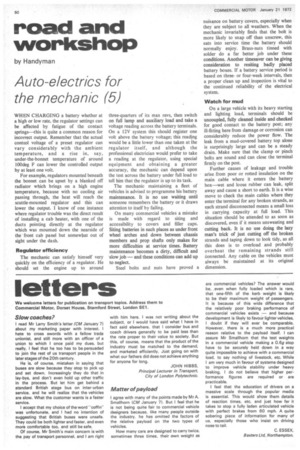Matter of payload
Page 52

If you've noticed an error in this article please click here to report it so we can fix it.
I agree with many of the points made by Mr A. Smallhorn (CM January 7). But I feel that he is not being quite fair to commercial vehicle designers because, like many people outside the industry, he has omitted the factors of the relative payload on the two types of vehicles.
How many cars are designed to carry twice. sometimes three times, their own weight as are commercial Vehicles? The answer would be, .even when fully loaded which is rare, that one-fifth of the kerb weight is likely to be their maximum weight of passengers. It is because of this wide difference that the relatively poor braking performance of commercial vehicles exists — and because development is likely to favour lighter vehicles, I doubt if they will ever be comparable. However, there is a much more practical reason relative to the payload itself. I can assure Mr Smallhorn that the test weights in a commercial vehicle making a 0.6g stop have to be securely held down in a way quite impossible to achieve with a commercial load, to say nothing of livestock, etc. While I am very much in favour of systems designed to improve vehicle stability under heavy braking. I do not believe that higher performance figures are required or are practicable.
I feel that the education of drivers on a massive scale through the popular media is essential. This would show them details of reaction times. etc, and just how far it takes to stop a fully laden articulated vehicle with perfect brakes from 60 mph. A quite sobering piece of information for many of us, especially those who insist on driving nose to tail.
C. ESSEX, Baxters Ltd, Northampton.










































































































